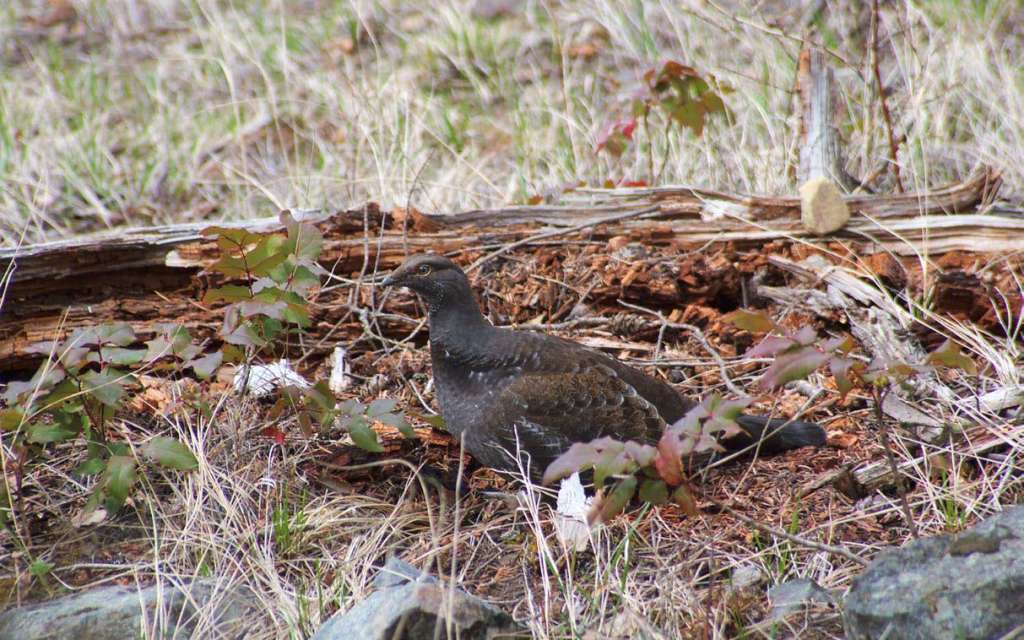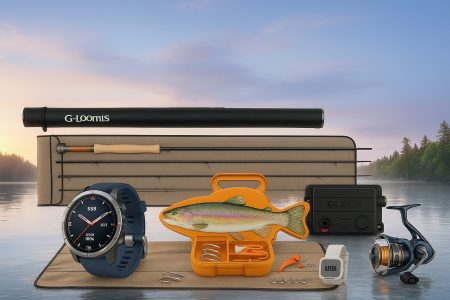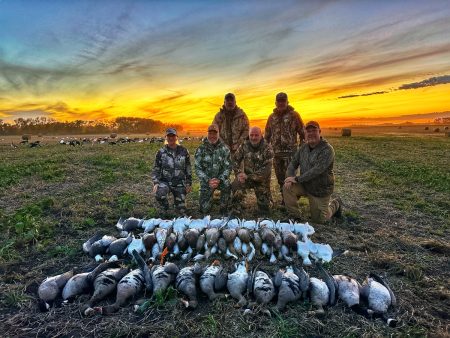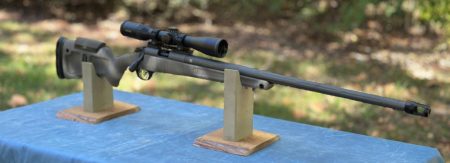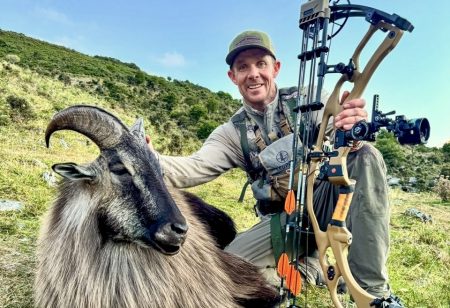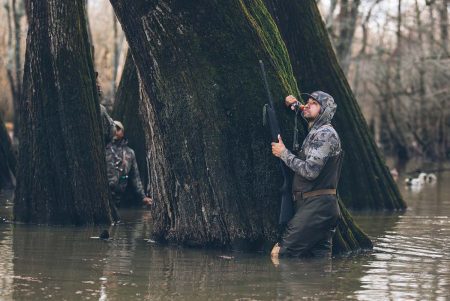I went north, way north, to the B.C. – Yukon border to hunt moose. We camped and tented for 13 days and we had a great trip, although we never got our moose. However, we caught a lot of Arctic grayling and bagged a mess of spruce grouse.
As it turned out, it was decided that one person had to stay back at camp each day to guard it, tend the fire, clean up, etc. But the advantage to that was that they got to use the quad and drive or walk the back roads in search of grouse for dinner. The area had a proliferation of these wild chickens, both ruffed and spruce and it made being the camp guard a whole lot more fun.
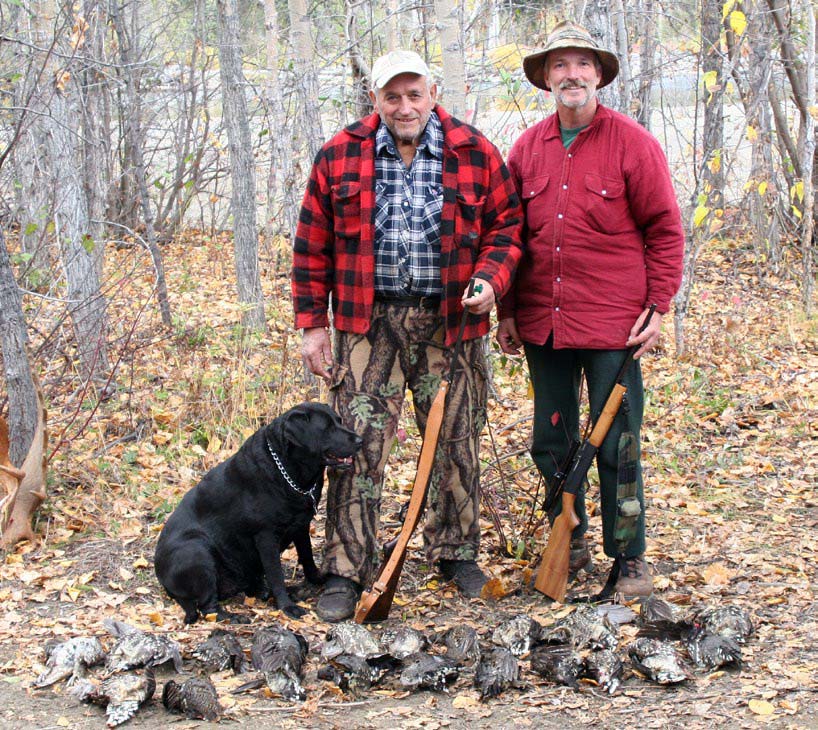
Grouse, as a matter of habit, like old dirt roads. The roads serve as dusting and gravelling up sites. Roads that are moss covered are not nearly as attractive to the birds as old roads with lots of exposed dirt, especially fine silts with small gravel mixed in. This allows the birds to flop down and dust themselves; literally throwing the dust over themselves and rubbing it into their breast feathers. This helps them with their lice issues. The small gravel is attractive for filling their crops. As you know, grouse have no teeth. Instead they have a crop that looks a bit like a small bag in their throat, where the things they eat get held and ground up before moving on to their stomach. When the birds eat the gravel, it goes into their crop and helps to grind up the vegetation and berries and seeds they eat and so becomes easier to digest. They need both dust and gravel and thus old gravel roads are good places to look for them. Of course, this makes it perfect for those who like to hunt on foot, from a quad, or even a truck if the road is still passable.
The spruce grouse (Falcipennis canadensis) is a mediumsized grouse closely associated with the coniferous boreal forests or taiga of North America. It can be found across Canada except for the west coast of BC, the very far north and the far south of the prairies. It is quite a bit larger on average than its cousin the ruffed grouse and can be easily mistaken with the Franklin’s grouse. While both species have bright red wattles over their eyes, the male’s tail has a chestnut terminal tail band and has white spots overlying it, the Franklin’s grouse does not; it is entirely black. Spruce grouse have earned the name “fool’s hen” because they notoriously rely on their camouflage for safety. Any hunter who is familiar with this bird can tell you that it is a simple thing to get close to them, especially if they are in some low brush or low-lying branches. I’ve heard stories of people making wire nooses, attaching them to a long stick and literally catching these birds around the neck without the birds flushing. They are more skittish when exposed on a road, but you can still approach to within shotgun distance if you move slowly.
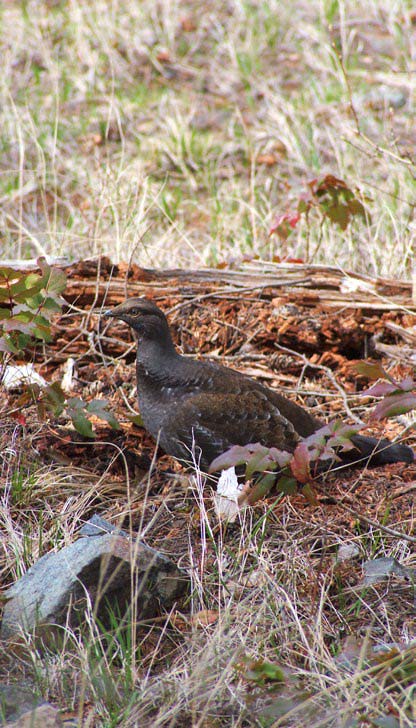
With habits like this, one has to ask themselves if it is even sporting to shoot these grouse. I know several hunters who won’t shoot them for this exact reason. However, I myself am a meat hunter. If dinner presents itself I will take it; I don’t look a gift horse in the mouth. In this particular situation up north, there were four of us to feed, so I was after my limit of 10 birds; I never managed that, although I bagged five in one two-hour drive.
Something I am conscious of when I hunt grouse, especially spruce, is limiting the number of birds I take from a single covey. I don’t think it is ethical or very wise to wipe out an entire family unit of these birds. I like to leave at least half to continue the population. I don’t know if that is sound logic conservation-wise, but it sounds right to me and I feel better about my hunt by doing that.
The choice of firearms to hunt spruce grouse is pretty easy and varied as well. You can legally shoot them with a shotgun, a rimfire rifle or a bow. I used my 12-gauge or a .22 for many years, mostly because I couldn’t afford another shotgun. Recently though, I picked up a used .410 shotgun and it works well. If I had a do-over though I think I’d go with a 20 or 28-gauge; they are a bit more versatile.
A good lesson I relearned with the little .410 is how important it is to pattern your shotgun before you hunt with it. When I bought it I actually got it for my wife. The opportunity presented itself though for me to take it along on a deer hunt soon after I bought it. I never patterned it before I went and I ended up missing some birds I swore I should have had. When I got home I took it to the range along with a big piece of cardboard I had drawn an outline of a grouse on and shot at it from 25 metres away. 90% of the pattern landed high (just above the bird’s head height) and almost a full bird’s length to the left. Just to be sure I shot again and the same thing happened. So, I now know that the gun shoots high and left and by about how much. When I took it on the moose hunt I aimed at the level of the bird’s feet and just to the right edge of the bird’s body and I killed every grouse I shot at. Good lesson relearned: pattern any unfamiliar gun before you hunt.
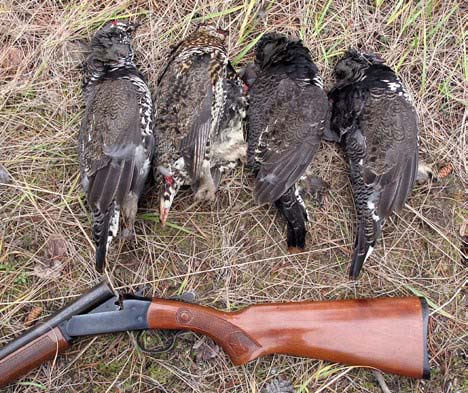
While hunting on foot can be a lot of fun and a good workout, especially with a dog, often these grouse are hunted while driving, or riding an ATV. If you are going to hunt from an ATV remember it is illegal to shoot when mounted and it is illegal to ride with a loaded firearm. You must dismount and then load.
Also, as a point of safety, remember that you can travel a very long way on an ATV in just an hour. If you break down you’d better have communications with partners. An hour on an ATV in one direction can mean a full day’s walk or more back if you break down depending on your speed.
Spruce grouse are delicious table fare. I find the birds too small to pluck and clean like a chicken. I prefer to take the breast out of them, butterfly them and fry. If you break their wings at the shoulder joints and then slip your finger into the gap between their breast bone and their throat you can pull the entire ribcage away from the rest of the body, leaving all the entrails and feathers in one easily disposed of package. You can fry them straight up or batter them in a mix of flour or pancake mix, add some all spice. Mmmm!
One last point: because of their nature to stick around, spruce grouse make a great bird for the beginning hunter to be trained on. If you are out and about in spruce grouse territory, pack your shotgun. If you don’t bring home the big game you can at least bring home dinner.
By Bill Luscombe
Per our affiliate disclosure, we may earn revenue from the products available on this page. To learn more about how we test gear, click here.






